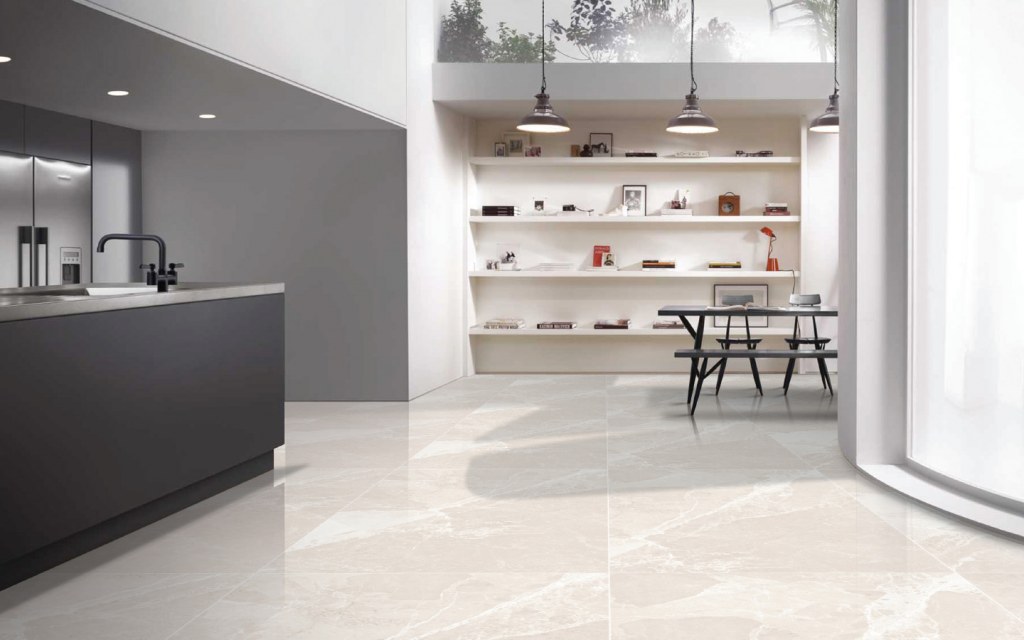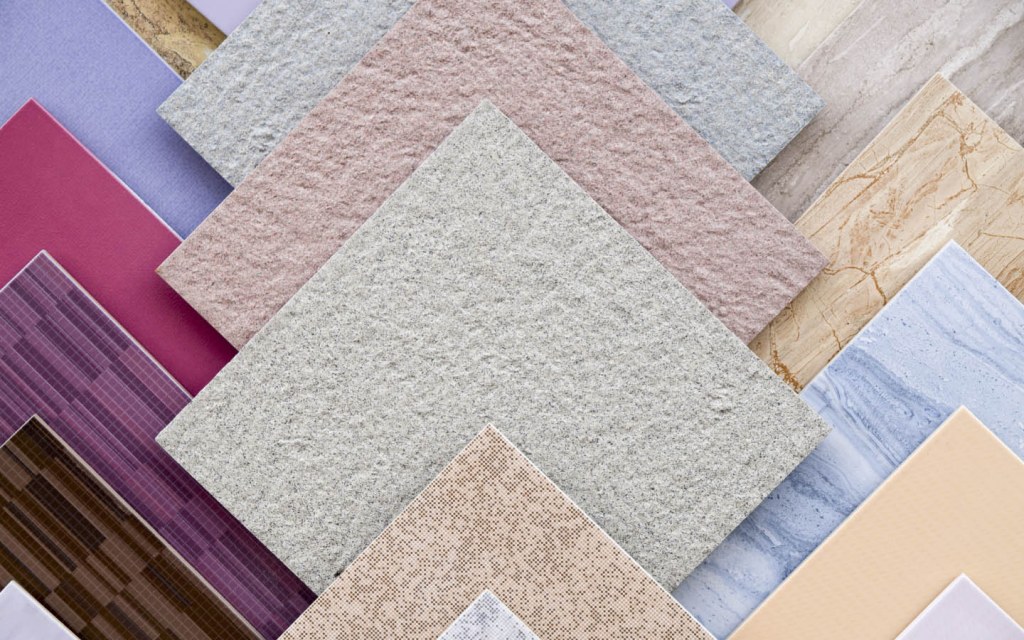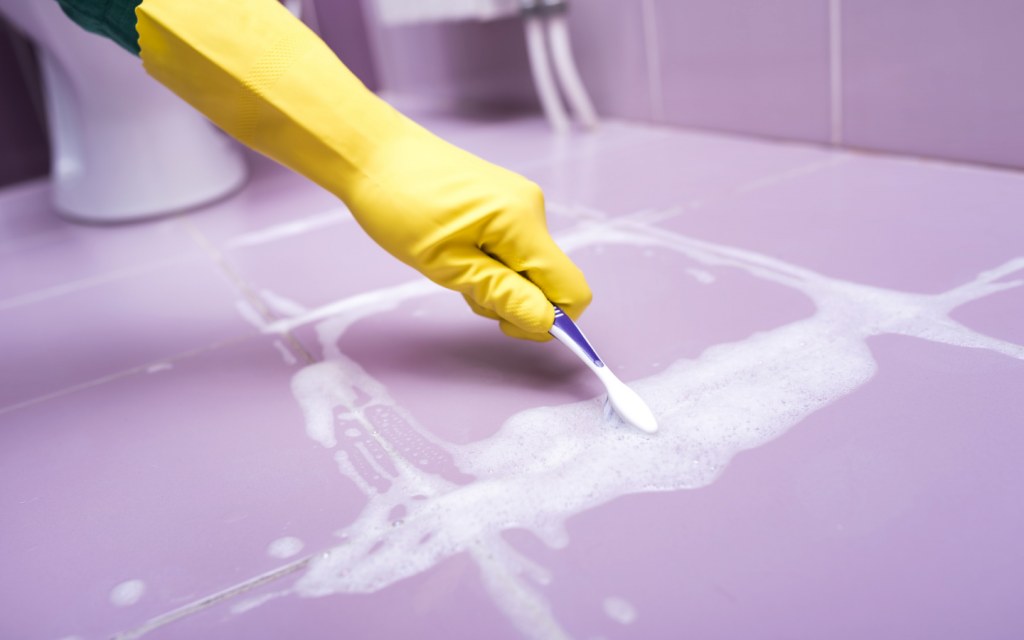Home » Home Decor » Budget-Friendly Ways to Clean Different Types of Floor Tiles
Your house can never look completely clean unless your floors are spotless and free of stains. Compared to other types of flooring options, tiles begin to look dull rather quickly. Although most of us routinely sweep and mop the entire house, sometimes it’s just not enough to deep clean your floor tiles and tile grout.
If the tiles in your house look dirty and stained even after you sweep them with a broom or use a vacuum cleaner, it probably means you need to deep clean your floor tiles. That’s the only way to get rid of all the grime and make them look brand new again.
Here are a few simple yet affordable ways to clean floor tiles and grout. These DIY cleaning tips will restore your flooring to its former glory without straining your budget.
How to Clean Marble Floor Tiles

Marble tiles are a popular choice for indoor flooring and countertops. They not only add aesthetic value to your house but are also relatively less expensive than porcelain and ceramic tiles.
However, given their porous nature and susceptibility to stains, marble tiles also require a higher level of maintenance than most of their counterparts.
If you have marble floors in your house, you need to swipe and dust them on a daily basis. However, make sure not to use brushes with harsh bristles. Similarly, avoid the abrasive tile cleaners available in the market. They will only end up damaging the tiles and making them look even worn out.
The same goes for acidic floor cleaners. Contrary to the popular belief, never clean floor tiles with vinegar, unless you want them to look old and scratched.
One of the best ways to clean floor tiles is to mop them with a damp piece of cloth every other day – or whenever you see a stain forming. You can also use a mild solution of liquid soap and water once every two to three weeks to keep the floors tidy.
This mixture can also be used to clean marble countertops as well. However, you must thoroughly wash out the soap residue to avoid any residue buildup on the tiles. If your tiles begin to get a little hazy, invest in some chemical cleaning products that are safe to use on marble.
Moreover, if you want to clean marble tile grout, dab an old toothbrush into a thick paste of baking soda and water. Then use the toothbrush to gently rub the homemade marble cleaner between the tiles. This will get rid of all the grime trapped inside the grout lines. Once done, wipe the tiles with a soft cloth dipped in clean water.
If your budget allows, apply a penetrating sealer on your marble floors. You can do it after every six months so that the tiles don’t lose their shine.
How to Clean Ceramic Floor Tiles

Ceramic is more durable and less porous than marble, making it less likely to stain. However, in order to make sure that sand and grit doesn’t scratch the surface, you’ll have to sweep or vacuum your tiles every two days or so.
You can also use a mild solution of detergent and warm water to deep clean your ceramic floor tiles. But use a rag or chamois mop instead of a sponge as it tends to push all the grime into the grout. It can make your floors look even dirtier and more difficult to clean.
Moreover, change the detergent solution once it starts getting a little murky. Or else, you’ll end up with dull-looking floors covered with a film of soap residue.
You can also deep clean your floor tiles with vinegar and baking soda. This mixture works perfectly if there are any stubborn stains that refuse to come out. Meanwhile, you can also use a solution of vinegar and water to clean textured ceramic floor tiles, as they tend to get dirty rather quickly.
As for the grout, pour some mild bleach solution between the tiles and let it sit for 5 to 10 minutes. You can then gently scrub it with a toothbrush. Once done, mop the tiles with water. While this technique is pretty effective, don’t use it too often or the bleach might begin to damage the floor tiles.
Although ceramic tiles are pretty sturdy and relatively affordable, they should not be installed outdoors. Instead, they are perfect to be used inside the house.
How to Clean Porcelain Floor Tiles

Porcelain might be a little expensive, but it is definitely one of the most durable materials you can use for indoor flooring. Broadly speaking, both porcelain and ceramic tiles belong to the same family. The only clear distinction between them is that the former is supposedly denser, smoother and more moisture-resistant than the latter.
If you have porcelain floors in your house, you may have noticed that they don’t immediately lose their lustre. However, if you don’t clean porcelain floor tiles regularly, which is two times per week at the very least, the stone might start looking a little worn out.
For unglazed tiles, you can mix a few drops of liquid dish soap in a gallon of warm water and use it to mop the floor. Make sure to wipe the floor with a dry microfibre cloth instead of letting the water sit there.
Meanwhile, it’s better to use cleaners meant for porcelain to clean glazed floor tiles. A solution of ¼ cup vinegar and a gallon warm water can also be used to remove stubborn stains and prevent discolouration. However, using it too often can also harm the surface.
As for the grout lines, a thick paste of baking soda and water will do completely get rid of any grease or dirt trapped between the tiles. This will instantly make your floors look tidy.
General Tips to Clean Floor Tiles

Don’t forget, clean tiles will make your home look more organised. Apart from regular cleaning and maintenance, here are a few easy ways to get rid of stubborn stains in case of an emergency.
Just make sure not to overdo it or else you might end up running the surface of your tiles.
For instance, if you accidentally spill coffee, tea or juice on the floor, immediately wash the stains with a solution of detergent and hot water. As for wax, tar or even gum, make sure the material solidifies before you attempt to remove it. You can place a plastic bag filled with ice cubes over the stain. After a few minutes, remove it with a flat stick or a small spatula. If that doesn’t work, inflammable paint thinner might get the job done.
Similarly, club soda is perhaps the best way to get rid of grease stains on tiles. Meanwhile, hydrogen peroxide works wonders on nail polish and blood stains.



